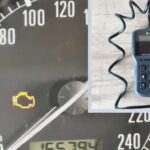Since 1996, OBD-II has been a standard feature in every vehicle sold in the United States. This diagnostic system, mirrored by EOBD in Europe and JOBD in Japan, has become a cornerstone of automotive maintenance and repair. Even with advancements in automotive technology, the question naturally arises: Is Obd2 Still Used, or has it been superseded? The answer is a resounding yes, and here’s why OBD-II remains critically important in today’s automotive landscape.
OBD-II: A Lasting Standard in Vehicle Diagnostics
Despite discussions and development around OBD-III, OBD-II remains the prevalent diagnostic system. OBD-III, while conceptually more advanced, is still fundamentally rooted in OBD-II architecture. The primary enhancement proposed for OBD-III involves transmitting emissions data and fault notifications remotely, potentially for regulatory oversight. This leap towards remote vehicle monitoring has raised privacy concerns and encountered technological hurdles, slowing down its widespread adoption and implementation.
Alt text: OBD2 diagnostic port located beneath a car’s dashboard, a standard interface for accessing vehicle health information.
The delay in OBD-III’s full deployment reinforces the continued relevance of OBD-II. For the foreseeable future, OBD-II will remain the primary diagnostic interface in vehicles worldwide. This longevity is further cemented by the extensive infrastructure and tools already built around OBD-II.
The Power of OBD-II Scan Tools in Modern Automotive Repair
The enduring presence of OBD-II means that diagnostic tools designed for this standard are not only still relevant but incredibly powerful and cost-effective. High-quality OBD-II scan tools are readily available at affordable prices, often in the $100-$150 USD range. Brands like Autel are well-regarded for offering comprehensive diagnostic capabilities in these tools.
These scan tools are far from basic code readers. They can access a wide array of diagnostic information, including:
- Generic and OEM-Specific Codes: Reading standard P0xxx codes as well as manufacturer-specific P1xxx, Bxxxx, Cxxxx, and Uxxxx codes for powertrain, body, chassis, and network systems.
- Monitor Readiness Checks: Assessing the status of emission control systems to ensure vehicle compliance.
- Parameter ID (PID) Display and Graphing: Providing real-time data streams from various sensors and systems for in-depth analysis.
- Advanced System Diagnostics: Diagnosing issues within systems like SRS (Supplemental Restraint System – airbags) and ABS (Anti-lock Braking System).
For a relatively small investment, car owners and technicians gain access to professional-level diagnostic capabilities, making OBD-II scan tools indispensable for modern vehicle maintenance and repair.
OBD-II and Modern Hybrid Vehicles
Even with the increasing complexity of modern vehicles, including hybrid models like a 2019 Honda Hybrid, OBD-II remains a valuable diagnostic entry point. While hybrid vehicles introduce additional operating modes and fault codes beyond traditional gasoline engines, OBD-II tools still provide a significant level of diagnostic access.
Alt text: Automotive technician using an OBD2 scan tool to diagnose a hybrid vehicle, highlighting the system’s broad compatibility.
While specialized scan tools with enhanced hybrid support exist, standard OBD-II scanners can still retrieve valuable information from hybrid vehicles. It’s always advisable to research tool compatibility, particularly if dealing with hybrid-specific systems. Manufacturers often specify the extent of “hybrid” support offered by their scan tools.
Conclusion: OBD2 is Here to Stay
In conclusion, the notion that OBD-II is outdated is far from the truth. OBD-II remains a vital and actively used diagnostic standard in the automotive industry. Its mandated implementation, coupled with the affordability and power of OBD-II scan tools, ensures its continued relevance for years to come. Whether you are a car owner looking to understand your vehicle better or a professional technician, investing in a quality OBD-II scan tool is a smart decision that will provide lasting diagnostic capabilities. OBD-II is not just still used; it is an indispensable tool in the modern automotive world.

